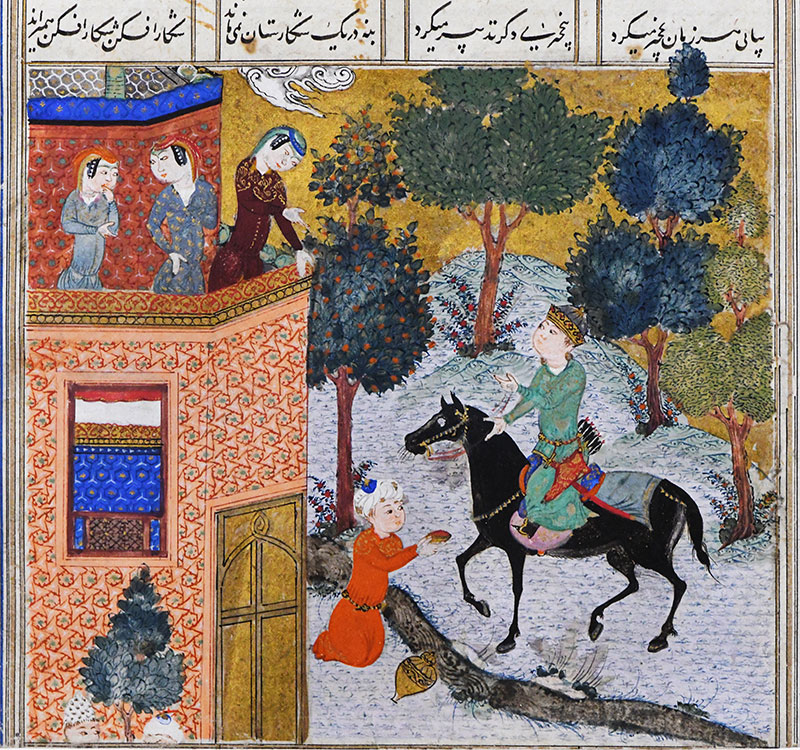Poetry was central in pre-Islamic Iran, but, essentially oral, it has only reached us through rare texts, such as the gathas in the Avesta, a major sacred text of the Zoroastrians. Having become a land of Islam in the 7th century, Iran will become a paradise of poetry, which will be written, but above all sung and transmitted from heart to heart. Always alive, it is, for Iranians, the universal language which beautifies the world, reveals the essence of the soul, erases social distinctions, enlivens cultural memory every day.
In the Islamized East, where the Arabic language imposes itself in all areas (religious, political, administrative, scientific), the Persian language and culture owe its revival to poets: Rudaki (c. 880-c. 941), considered the first great Persian poet, and especially Ferdowsi (c. 940-1019/25), born and died in Tus, not far from present-day Mashhad. In his epic Book of Kings (Shahnameh), Ferdowsi recounts in nearly 50,000 couplets the succession of kings and heroes, mythical or historical, from the creation of the world to the Arab conquest. In verses of dense majesty, he revived Persian by giving it lasting strength. Even more: he gave meaning to History, brought the past back to the present and contributed, in his own way, to Iranianizing Islam, by nourishing the collective consciousness of an Iran of glory and immemorial wisdom.

The grave of the poet Ferdowsi, Tus (Mashhad), 1934. Photograph: ©Patrick Ringgenberg.

